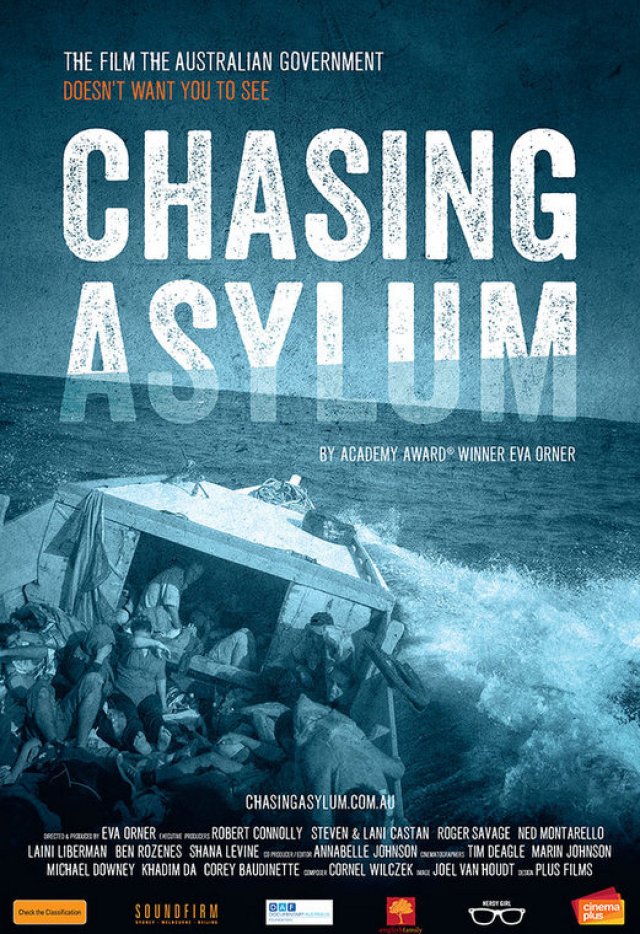
Chasing Asylum
Directed by Eva Orner
Selected cinemas
Chasing Asylum is a new documentary that shows the Nauru and Manus Island detention centres for the “Hell on Earth” and “human dumping grounds” they are.
Australian Academy and Emmy Award-winning producer and director Eva Orner said in a Q and A after a recent Sydney screening: “I thought maybe part of the reason it is not outraging people enough is we haven't seen it, so one of the things I wanted to do was to show it — I didn't know how hard that would be.”
The documentary guides us through the journey of those seeking asylum in Australia. We hear from asylum seekers in Indonesia about why they fled their home, juxtaposed with Australia's “don't come by boat” propaganda.
The documentary then takes us inside Nauru and Manus Island detention centres in a way not seen on film before.
The Australian government goes to great lengths to stop journalists having access to detention centres, especially filming inside them. Orner creates the documentary from hidden camera footage smuggled out of the camps.
The low-grade clandestine footage of the terrible conditions is all the more powerful because of the lengths the government goes to stop it being seen. We see hot, overcrowded, mouldy and disease-prone tents, drawings on walls depicting hopelessness and suicide, guards abusing asylum seekers and more.
This is predominantly through the eyes of social workers that went to Nauru and Manus in response to an advertisement for a “working holiday”. Experience of working with asylum seekers was not required.
The initial naivety of these workers is replaced with horror at the situation they find — including such things as being asked to learn how to use a Stanley knife to cut down people who attempt suicide.
Attempts to voice concerns about the abuses they uncover — including first hand witnessing of guards beating up asylum seekers — is met with a mixture of intimidation, bureaucracy and silence from the immigration department and local police force.
Eventually, some make the decision to speak out in the face of powerful anti-whistleblowing laws.
The documentary uses simple interviews that often conceal the person's identity, gradually building up the atrocities shown through the low-grade secret footage. It never uses re-enactments, fancy infographics, music that causes a strong emotional reaction or a narrator to tell us what to think.
The director shows the audience the unfolding horrors and invites them to make up their own minds.
The scenes on the days leading up to the 2014 murder of Iranian asylum seeker Reza Berati by a security guard are particularly pertinent. It shows raw footage of guards talking about shooting protesting asylum seekers. Scenes with asylum seekers giving first-hand accounts of his murder and a former security guard speaking out make up the documentary's most powerful section.
Select excerpts of speeches from Australian politicians dispassionately continuing their support for the policy of offshore mandatory detention, juxtaposed with the increasing horrors in detention, drew a rumble of boos from the audience at the Ritz Cinema.
Apart from clinically showing the bipartisan support for offshore detention, Orner's only analysis is that detention exists to stop the boats and that the Australian government has failed on the asylum seeker issue.
The film says Australia should raise its refugee intake, giving the example of Australia's acceptance of Vietnamese asylum seekers in the 1970s and Europe's response to the Syrian refugee crisis — in particular, Germany's intake of Syrian refuges.
However, the film omits how European nations are building walls and deploying armed fleets to stop asylum seekers.
More importantly, it never discusses why racism exists in Australia or how asylum seekers are used by governments as a weapon of mass distraction from social and environmental attacks.
The film also neglects the story of those fighting against the detention regime. The only time the documentary shows footage of a protest in detention is in the days leading up to Berati's death.
Among other protests not mentioned is the mass hunger strike of more than 700 asylum seekers in Manus detention centre at the start of last year — the largest hunger strike in world history.
There is also no time given to the refugee campaign in Australia, apart from dedicating the film to Malcolm Fraser at the end.
Absent are the stories of solidarity, such as examples of asylum seekers drawing pictures in Nauru depicting their suffering and sending them to activists in Australia, who paint them on banners featured in street protests.
Chasing Asylum never gives a sense of agency. There is no sense that refugee activism can make a difference or that there is a refugee campaign in Australia people can join.
However, as a visceral examination of the conditions in offshore processing, Chasing Asylum is intensely brilliant. It is the first documentary to visually pull together horrors of children in detention, sexual assault, abusive guards and conditions that directly contribute to deaths.
Like the article? Subscribe to Green Left now! You can also like us on Facebook and follow us on Twitter.